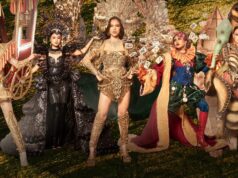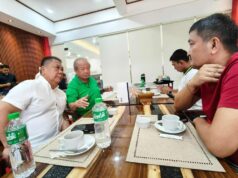CLARK FREEPORT – It’s a museum like no other. The Nayong Pilipino sa Clark Expo (NPCE) Museum is now fast becoming a standout among other museums in the country and probably in the ASEAN region for its unique integration of displays and actual demonstration of artifacts for an interactive experience.
Atty. Apolonio B. Anota, Jr., NPCE executive director, said the museum houses some 1,300 Philippine weaves made by early Filipinos dating back hundreds of years. Anota said the museum opened in August and is ready for the launching of the “2015 Visit the Philippines Year,” the grandest tourism celebration in the country and the upcoming Asia Pacific Economic Cooperation (APEC) summit.
He said in other museums, you can only view the artifacts but cannot touch them. But at the NPCE Museum, you can touch the artifacts and you can even be taught how to wear them, he added. The NPCE Museum took four years and only P18 million to build on a 1,000 square-meter property, Anota said.
It was learned that a similar museum is being built on a 1,000 square meter lot at Pioneer Street along EDSA in Mandaluyong City which has a budget of P1 billion. The said museum, drawn by a Japanese architect, will also display Philippine weaves.
The National Museum in Manila has only eight pieces of Philippine weaves in its weave section, Anota said, as compared to the numerous pieces of artifacts at the NPCE Museum. “But here in Clark, we are alive because of the interactive experience,” he said.
Huge pictures adorn the museum with the weaves worn by Filipino models. “By showing the pictures we want to teach the visitors that these are worn garments,” Anota said. “We use the picture strategy because it is hard to explain about museums,” he said.
When visitors come they will see the garment and immediately conclude that it’s a “malong” because the picture shows how it’s worn, he explained. “When the General Director (Julien Anfruns) of the International Council of Museums came, she was really impressed,” Anota said.
“We are blessed with the most beautiful artifacts,” Anota said. But the museum has only 65 weaves on display and the rest of the collection is preserved in the storeroom, he added. The NPCE Museum is the only museum that used cloth to wrap its walls, according to Anota.
Outside the museum are the dye trees or garden of dye trees like the duhat which produces the color purple from its skin or azuete for red or katuray. Guava leaves produce the color green. But nature is unique, Anota said, that’s why the granada fruit can produce the color red but if you scrape it you get the blue dye.
The mangosteen and avocado are also used for dyes in the garden. Anota said the “dye section” in the NPCE Museum is where one can learn how the color red is culled from the fruit of the bincoro tree and applied to the cloth.
The colors and designs of the weaves are unique because the pattern was revealed to the weavers in a dream. It’s some sort of communication between God and the weaver, Anota said. Some weaves use the “tie dye technique” using Abaca. The process of coming up with the finish product is meticulous, said Anota.
“Some are cotton weaves which means we have cotton in the Philippines in ancient times and know how to process it,” he said. Other weaves use pearls which were precisely cut with the use of sharp tools. “This is proof that we have knowledge of an advance level of metallurgy because we have tools sharp enough to cut pearls without breaking them,” he explained.
The kids are given crayons and color sheets and can sit down on adesk and turn wonderful works of art during the museum tour, he said. The kids’ creative playground in the museum is dubbed the “Laro- Aral” living museum where visitors are taught how to wear the artifacts.
A museum guide shows how one can make bags, shorts, dress, tube, skirt or a turban from the artifact itself.
At the museum entrance, a black palm (palmetum pilipinenses) stands as sentinel. It is described by Anota as the only one in the world. “It is the only one we know named after the Philippines,” Anota said. Visitors are welcome except Mondays when all museums all over the world are closed, said Anota.
It’s a different kind of experience, he promised.




